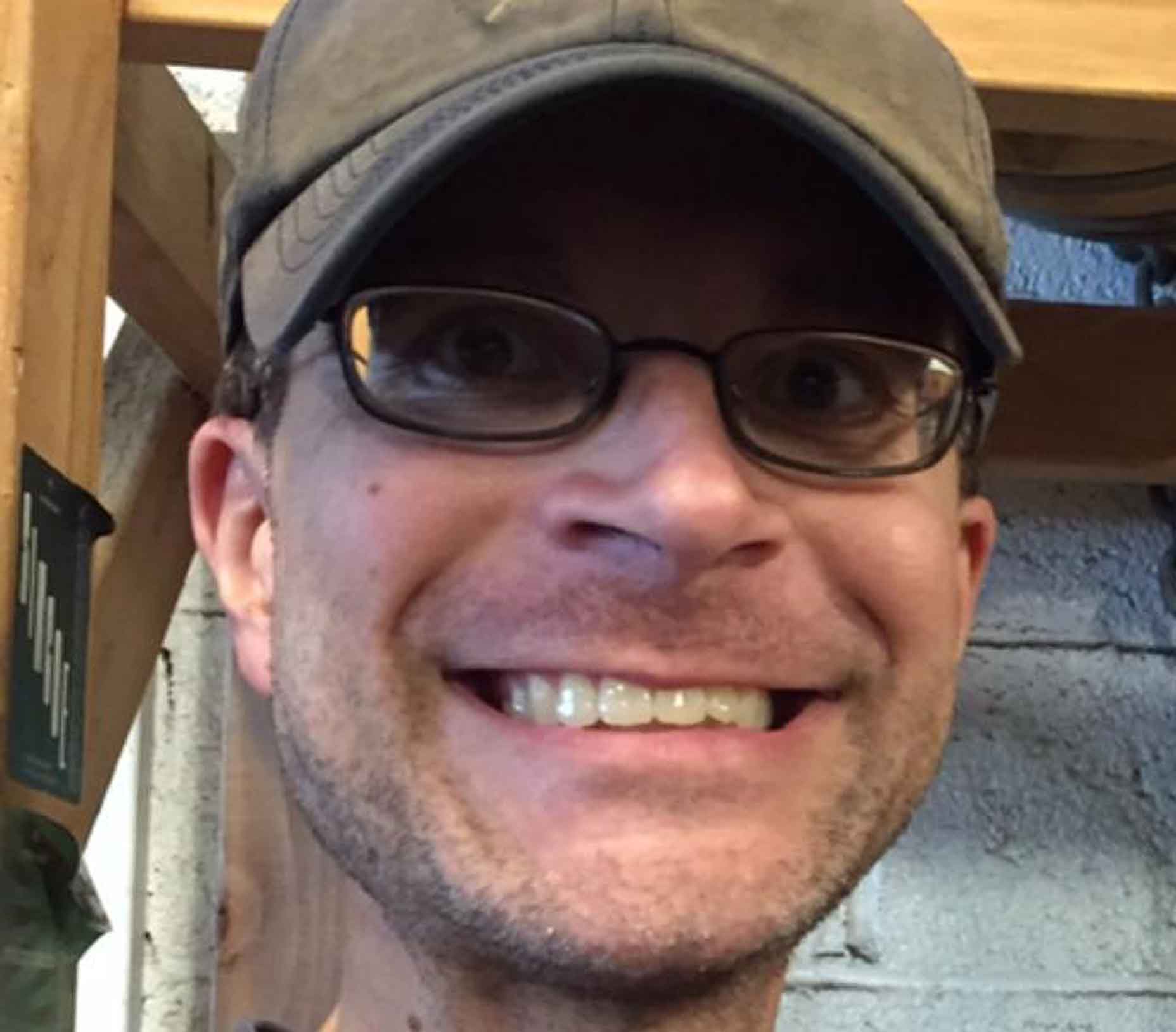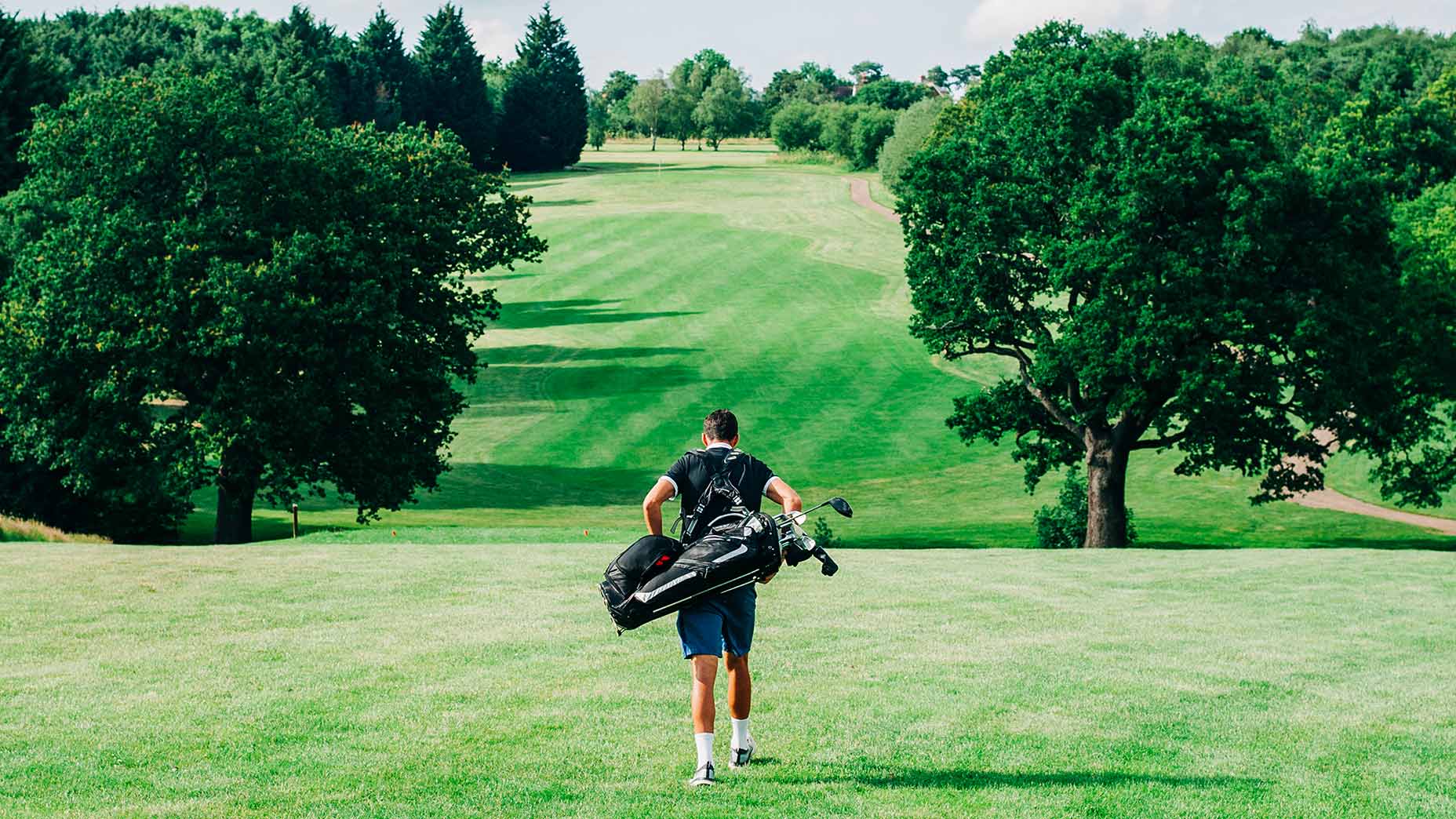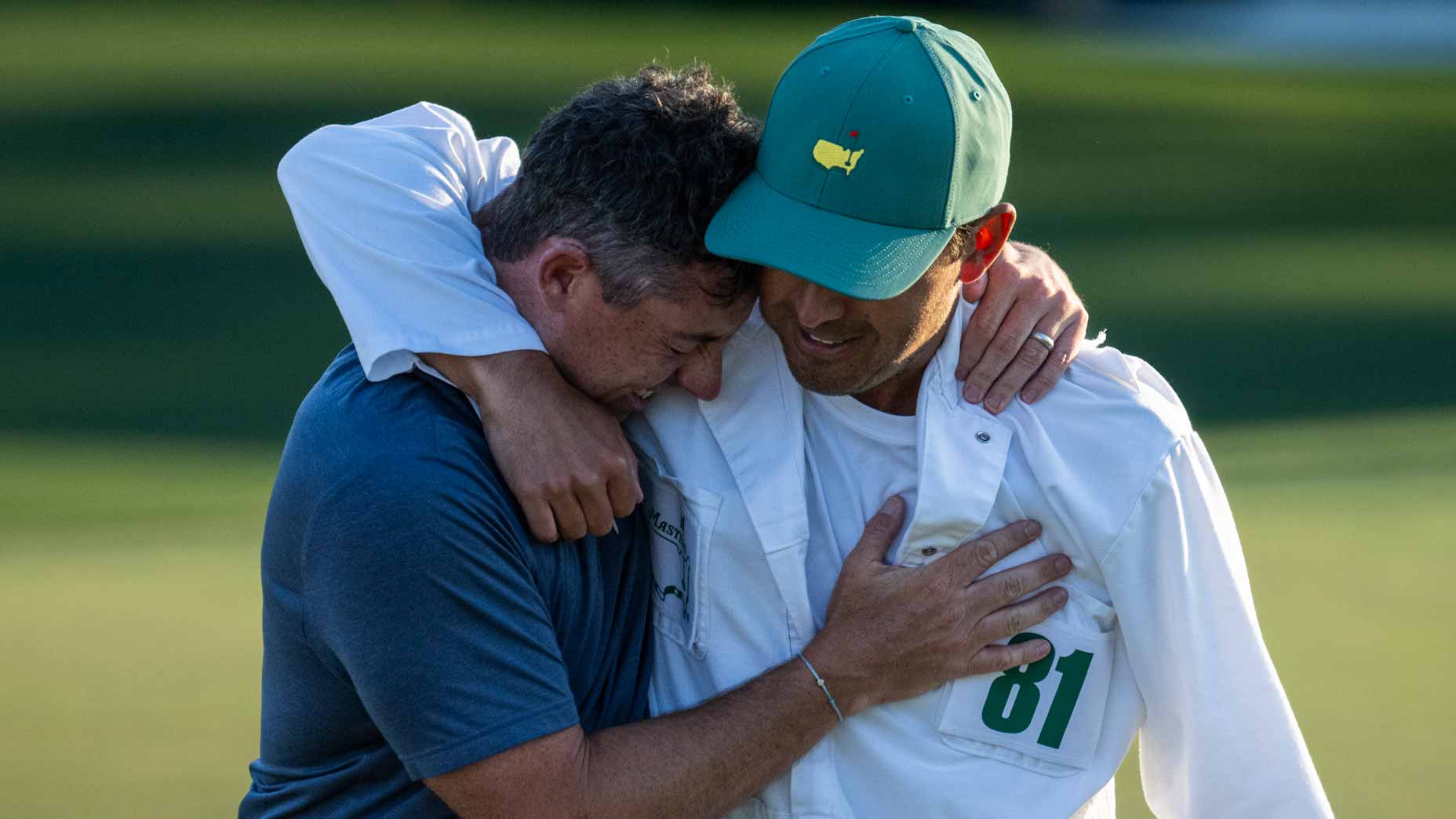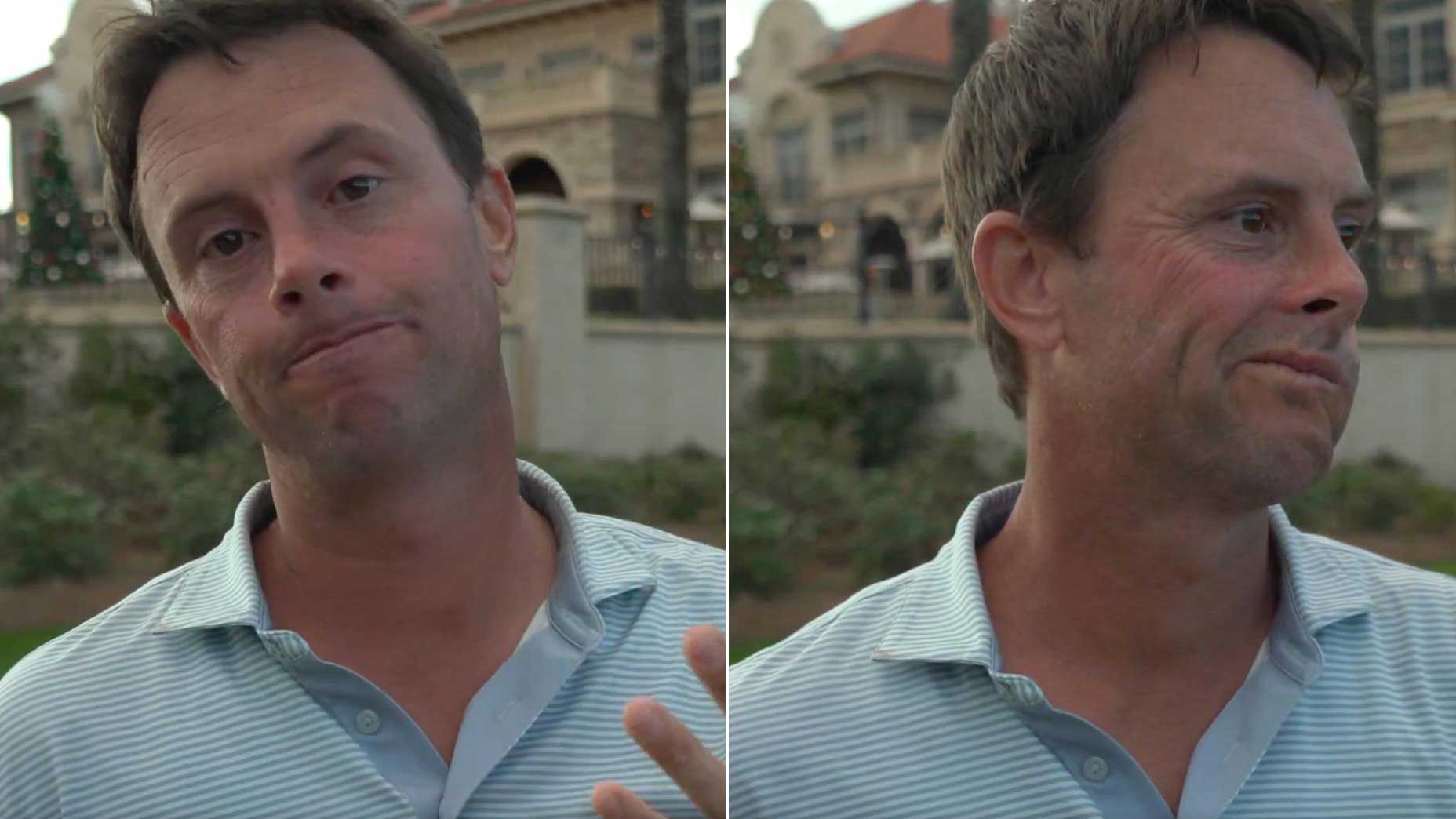Justin Thomas, his yardage figured out, now goes to work.
His lie? Mostly flat. “So that makes a big difference in my comfort level of being able to get this there,” he said.
What about the green slope around the pin? He learned it worked left to right. A target was next. “That tree about 15 feet left of the hole,” he said, “kind of maybe like pinch one off of that and just try to kind of get it working down toward [the flag].”
And trajectory? To a flag 134 yards away and guarded by a front-right bunker and about 10 mph wind, Thomas had a thought. “From this distance, it would definitely be again a trajectory thing,” he said. “If I can keep this 9-iron pretty much apexing at the top of those clouds, it would be about a high 40s shot to where it would be able to cover [the bunker].”
Would Thomas take any speed off? He said he wouldn’t, but that was a personal choice.
“Yeah, I try to keep my speed through the ball pretty consistent,” he said. “It’s more of probably how far I’m taking it back. I don’t know why. It’s just always been — I don’t have a clock system or anything. I just try to feel basically what’s the shortest distance I can take it back to get it that distance. It’s a weird way to think about it, but it’s just — I don’t know why. My dad doesn’t even remember telling me that, but growing up, it was like just to keep my acceleration consistent through the ball. Theoretically it does change. But it doesn’t feel any different to me.”
From there on the recently released video from Titleist, Thomas hit, and his ball finished about 15 feet from the hole.
At the least, the process was mesmerizing. On the video, Thomas was deliberate in his explanation, but at game time, he’ll process his information in about 2 minutes, if not faster.
But for amateur players, there were a pair of takeaways.
The first came from Andy Proudman, who is part of the Me and My Golf instruction team along with Piers Ward, and they were the hosts of the video. Proudman compared the Thomas method — to the amateur setup.
“I think the best thing about this, though as well, and for the viewers, I think the difference with you guys at the top level is you get so clear on exactly ‘I want to start it at the tree,’” he said. “There’s the flight, there’s the window. You’re building that picture in your mind straight away, which then just has so much power in how you move and the intention is just huge, that a lot of amateur golfers don’t have that visual detail. They stand up there, there’s the yardage and then just swing.”
Thomas agreed.
But he also thought amateurs could cut a number of strokes just by looking around.
“The pin’s in the back, [and] if you’re between clubs, hit less club,” Thomas said on the video. “If there’s trouble short, hit more club.
“Like that could be the easiest way for them to save five, 10 strokes a round. They should be thinking little things of just yeah, OK, there’s a lot of trouble right, I hit it right quite often, the wind’s off the left — I’m going to aim a little farther left. But it is little things like that could be helpful to anybody.”
Is five to 10 shots hyperbolic? Perhaps. Then again, if you’re a player who aims at flags — and solely at flags — the tip is valuable.
As they spoke, Thomas then went back to work on another shot.
Editor’s note: To watch the complete Titleist video with Thomas, please click here.










